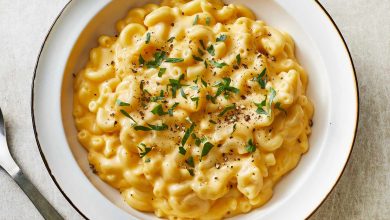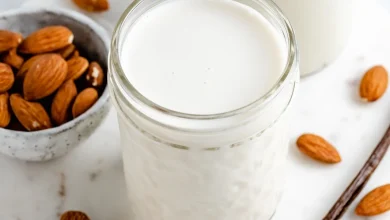Garlic (Raw)
Garlic is a versatile and flavorful ingredient commonly used in kitchens worldwide for its unique taste and numerous health benefits. It’s a small but mighty addition to many dishes, whether you’re adding it to sauces, soups, roasted vegetables, or spreads. Garlic is renowned not only for its pungent aroma and distinct flavor but also for its powerful medicinal properties, making it a staple in both culinary and holistic practices.
Nutritional Information (Per 100g of Raw Garlic)
| Nutrient | Amount |
|---|---|
| Energy | 149 kcal |
| Protein | 6.36 g |
| Total Fat | 0.5 g |
| Saturated Fat | 0.089 g |
| Carbohydrates | 33.06 g |
| Dietary Fiber | 2.1 g |
| Sugars | 1.0 g |
| Calcium | 181 mg |
| Iron | 1.7 mg |
| Magnesium | 25 mg |
| Phosphorus | 153 mg |
| Potassium | 401 mg |
| Sodium | 17 mg |
| Zinc | 1.16 mg |
| Copper | 0.299 mcg |
| Manganese | 1.672 mg |
| Selenium | 14.2 mcg |
| Vitamin C | 31.2 mg |
| Thiamin (Vitamin B1) | 0.2 mg |
| Riboflavin (Vitamin B2) | 0.11 mg |
| Niacin (Vitamin B3) | 0.7 mg |
| Vitamin B6 | 1.235 mg |
| Folate (Vitamin B9) | 3.0 mcg |
| Vitamin B12 | 0.0 mcg |
| Vitamin A | 0.0 mcg |
| Vitamin E | 0.08 mg |
| Vitamin D2 | 0.0 mcg |
Allergen Information
Garlic is naturally gluten-free, dairy-free, and soy-free, making it an excellent choice for individuals with common food allergies. While it does not typically cause allergic reactions, some people may experience garlic sensitivity, which can lead to gastrointestinal issues. Always be cautious if you’re adding raw garlic to recipes for those with sensitivities or allergies.
Dietary Preferences
- Vegan: Garlic is suitable for vegan diets, adding flavor and health benefits without any animal products.
- Vegetarian: Perfect for vegetarian dishes, garlic complements a wide variety of vegetables, grains, and proteins.
- Low-Carb: While garlic contains carbohydrates, the amount in a typical serving (used in cooking) is minimal enough for most low-carb diets.
- Low-Fat: Garlic is naturally very low in fat, making it an excellent ingredient for those seeking to limit their fat intake.
- Diabetic-Friendly: Garlic’s low glycemic index and its potential to support healthy blood sugar levels make it a suitable option for diabetics in moderation.
Health Benefits
Garlic is widely recognized for its potential health-promoting properties. It has been linked to a variety of health benefits, including:
- Immune Support: Garlic is known for its ability to support the immune system, thanks to compounds like allicin, which may have antimicrobial and anti-inflammatory effects.
- Heart Health: Regular consumption of garlic may help lower cholesterol levels and blood pressure, supporting overall cardiovascular health.
- Antioxidant Power: With a good amount of vitamin C, garlic acts as an antioxidant, which may help fight oxidative stress and reduce the risk of chronic diseases.
- Digestive Health: Garlic can also aid in digestion by promoting healthy gut flora and may help alleviate digestive issues like bloating.
How to Use Garlic
Raw garlic is incredibly versatile and can be incorporated into a variety of dishes:
- Chopped or Minced: Add freshly minced or chopped garlic to salad dressings, dips, or spreads for a zesty kick.
- Roasted: Roasting garlic softens its flavor and brings out a milder, sweeter taste. It’s perfect for adding to roasted vegetables, mashed potatoes, or pasta sauces.
- Infused Oils: Infusing olive oil with garlic can add depth of flavor to your cooking while imparting some of the health benefits of garlic.
Conclusion
Garlic, with its robust flavor and multitude of health benefits, is a must-have ingredient in any kitchen. It not only elevates the taste of your favorite dishes but also provides a wealth of nutritional advantages. Whether used raw, cooked, or in oil form, garlic is a versatile, healthy addition to a wide range of diets. Keep it on hand for both everyday cooking and for its potential to boost your health.










